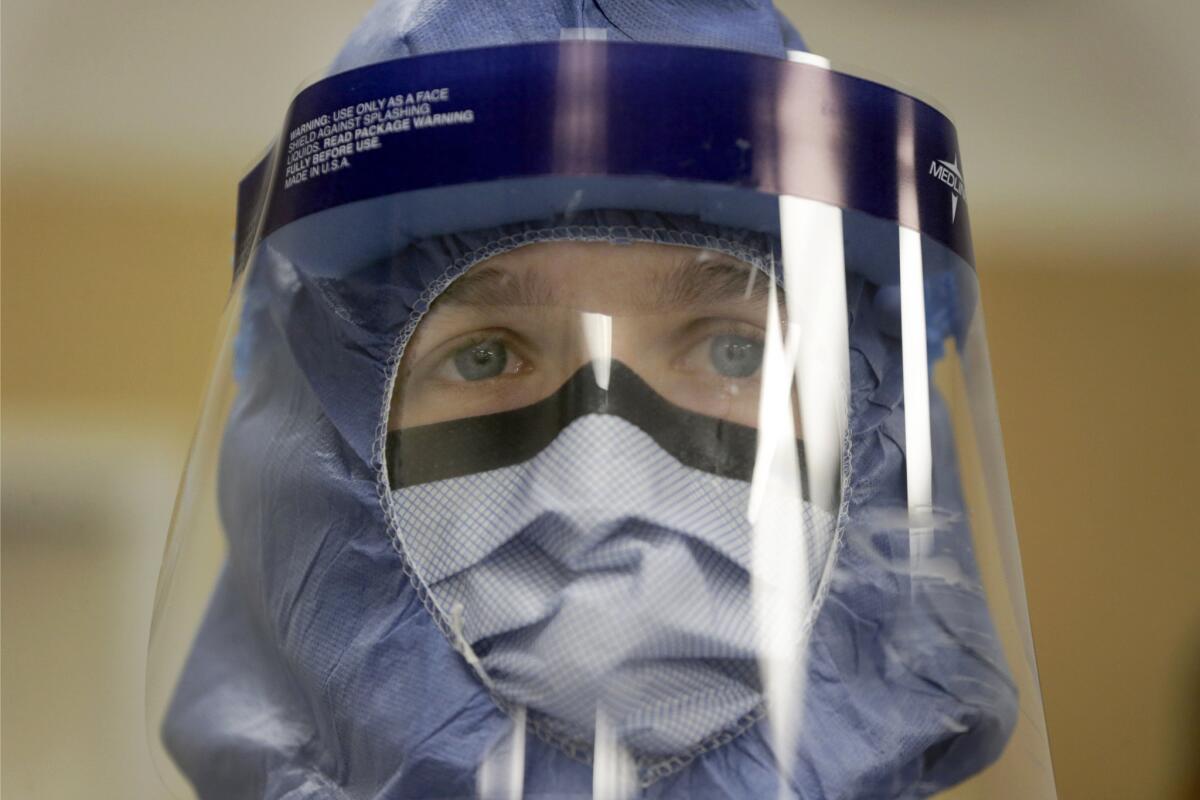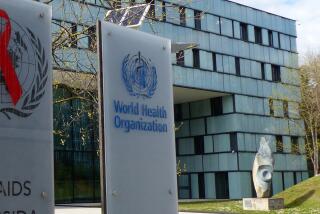New Ebola protection guidelines leave no bare skin

- Share via
After pointed criticism from healthcare workers and relatives of an Ebola-infected nurse, the U.S. Centers for Disease Control and Prevention announced new guidelines Monday for hospital protective gear.
The guidelines, which were scheduled to be posted on the CDC’s website late Monday night, were described by CDC Director Thomas Frieden during a telephone news conference.
Among other changes, the new guidelines eliminated areas of bare skin and required more intensive training in the donning and removal of equipment. They also provided for the designation of a hospital monitor who would observe procedures and ensure that guidelines were properly followed.
“Previous guidelines ... allowed for exposure of skin, and I think that made people nervous,” Frieden said. “It’s perfectly sensible to say that that’s something that should not happen.”
Frieden and other health officials had endured heated criticism by some U.S. medical workers and politicians who complained that existing guidelines were too lax, and would expose healthcare workers to the Ebola virus when treating patients.
“The CDC recommendations are inadequate at best,” Dr. Elizabeth Mitchell, a Los Angeles emergency room physician, wrote in an email. “I know multiple doctors who are nervous and buying their own suits.”
The issue came to a head Sunday when Dr. Anthony S. Fauci, director of the National Institute of Allergy and Infectious Disease, took to the airwaves and acknowledged that two nurses in Dallas may have been infected by their exposure to a now-dead Ebola-infected patient, Thomas Eric Duncan.
Prior to that, Frieden had suggested that the nurses may have become infected by failing to follow the guidelines. Officials at Texas Health Presbyterian Hospital in Dallas insisted that was not the case and that the nurses followed CDC guidelines.
On Monday, Frieden said that the original recommendations were drafted in 2008 and updated this year.
However, he said that health authorities had since come to realize that certain hospital procedures - such as the insertion of patient breathing tubes or suction instruments - were possibly exposing healthcare workers to an infected patient’s bodily fluids.
The new guidelines also call for the use of specialized breathing masks, which may better protect healthcare workers from fluid splatter that might result from such invasive care.
“It’s not because we think Ebola is airborne, but rather because we think that what gets done in American hospitals can be so risky ... we wanted to add that extra margin of safety,” Frieden said.
He said that the new guidelines were modeled after those of Doctors Without Borders, as well as those of Emory University Hospital and University of Nebraska Medical Center, both of which operate special biocontainment units and have successfully treated Ebola patients.
According to the CDC, the new guidelines no longer recommend the use of goggles, which may not provide full protection from splattered fluids.
The guidelines also recommend double gloves; boot covers; respirators, including either N95 respirators or powered-air purifying respirators; disposable face shields; and surgical hoods, among other things.
Frieden said that the CDC would be offering training to healthcare personnel in the coming days and that workers would be required to demonstrate proficiency in the use and handling of protective gear.
To ensure that the training was adhered to during patient treatment, a special monitor would actively observe and supervise each worker as they donned the gear and removed it.
“Even one healthcare worker infection is too many,” Frieden said.
Follow @montemorin for science news







